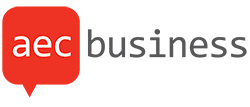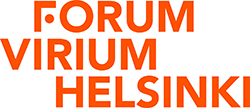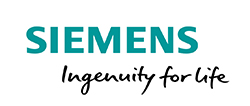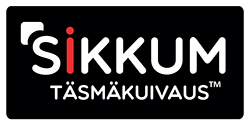TUESDAY 24 SEPTEMBER
10:30-12:00 PropTech Fund - Nordic focused built environment tech fund, is it possible?
10:30 Welcome by RAKLI
10:30-10:50 How to create a tech fund and some examples - Sarah Sipilä, KPMG
10:50-11:10 Investing in PropTech startups example (TBA)
11:10-11:20 Investment story (TBA)
11:40-12:00 Idea #1 to invest in PropTech – Daniel Collado-Ruiz, Nestholma
11:20-11:40 Idea #2 to invest in PropTech - Marko Tulonen, Caranto.vc
12:00 Closing words
You are warmly welcome to this invitation only Nordic focused PropTech fund info session hosted at WDBE conference. In this session we will see and hear more about PropTech in general and different models of how to invest in PropTech. We will also see examples on how corporations are working closely together with startups (with success).
request invitation from Mikael.langstrom@rakli.fi
13.00-14.45 Twinning the City
Mr. Ilkka Suojanen (Esri Finland Oy), Mr. Marko Saastamoinen (Esri Finland Oy)
Digital twins have been around since the early 2000s. In the resent years these virtual models became more cost-effective to implement due to the rise of the Internet of Things.
In the workshop CTO Ilkka Suojanen and development manager Marko Saastamoinen from Esri Finland will share their insight on why the concept of the smart city through digital twins is obvious and what are the benefits of integrating geospatial components within the digital twin model.
From urban planning to land-use optimization, the trend of digital twins is picking up pace amongst the most tech-savvy countries in the world. Digital twins allow the simulation of plans before implementing them, exposing problems before they become a reality. Architectural aspects that could be planned and analysed through digital tools include; housing, wireless networks antennas, solar panels, and public transport.
Ilkka Suojanen and Marko Saastamoinen believe that creating a digital twin is paramount for any city embarking on the journey of the digital transformation. According to them only with a digital twin in place, can government agencies effectively analyse what can be done with the data and improve citizen living, create economic opportunity and revitalize a closer community.
In the workshop you will find out how data-rich digital models of the city replicate its physical features and capture its processes in real time. You will also see, how by analysing the collective data from sensors on various physical assets, planners can generate simulations that guide city planning.
According to Ilkka Suojanen geospatial information helps the digital twin become aware of both the actual and relative position of its real-world counterpart. One good thing about having a geospatial component within the digital twin model is that the geospatial component enhances the analytical component so that users can explore and find out things that were not noticed before.
.
15.15-17.00 Smart Spaces – focusing on the user in the PropTech
Ms. Elisa Rönkä (Siemens - Smart Infrastructure), Mr. Santeri Sillanpää (KONE Corporation)
The PropTech evolution has been classified by The World Economic Forum (JLL CEO Asia via WEF) into three major categories:
PropTech 1.0: Emerging offerings around online listing sites for residential property (2007)
PropTech 2.0: New services based on data analytics (2013)
PropTech 3.0: New players focusing on emerging technology such as drones, VR and AR as well as blockchain (2014 onwards)
What we see now is the evolution into PropTech 4.0 where focus shifts from experimentation with technology back to the basics:
Lead question for the workshop: What is the value that can be created and the use cases that should be solved?
Technology in itself holds no value unless it is adopted by its users and same applies to PropTech, which is currently probably at the height of its hype curve. It is certainly not technology that disrupts markets, but customer adoption. With these thoughts in mind it is time to start disrupting also the slow-moving building industry.
What become the defining factors of success is not technology features or even integration capabilities, but instead the use cases that these emerging or existing technologies enable us to solve. Whether the impact is on building experience, operational efficiency or society itself, one fact is the same: buildings are no longer physical structures with a stack of tech deployed. Instead, they are interfaces between the people and the processes and services within, and their role is to be an active contributor instead of a rigid frame. It is all about outcome economy.
If we talk about smart office buildings, for example, buildings play an integral role in employee experience. Buildings are a platform for innovation - enabling activity-based working, community building, well-being and collaboration. Whatever PropTech lies behind is secondary. Because we have seen plenty of examples of ‘smart’ buildings crammed with the latest, greatest tech but where the definition of use cases for same has fallen flat. What one ends up with is simply a giant data dump and an investment with a debatable return.
PropTech deployments should therefore always be deployed in line with business strategy, culture and organizational KPIs. In an office space, focusing on increasing the productivity and happiness of employees while optimizing space and operational efficiency is key. It is about finding a holistic approach to define ‘smart’ and ensuring the tech deployed is scalable across buildings, businesses and time spans. This is where value in the light of PropTech 4.0 is created - and the central idea for the WDBE 2019 workshop.
Links to Scandinavian reference case for workshop:
https://www.lysgarden.no/
More on people flow experience:
https://www.kone.com/en/news-and-insights/stories/
WEDNESDAY 25 SEPTEMBER
10.45-12.15 Transparency, collaboration and resilience across the building value chain
Mrs. Julia Ahvenainen (Stora Enso), Mrs. Jutta Menestrina (TRÄ Group)
HEAL will host a workshop where attendees will discover methods for increasing transparency, collaboration, and resilience in the building sector while securing healthier, more affordable living for all. We hope to work with workshop participants with expertise across the entire value chain to equip them with a toolset meant to shift perspective from siloed, sub-optimised working methods, to transparent, collaborative, and resilient ways of working.
This workshop starts with a “press release” that will shake the building industry: A newcomer (otherwise a well-known global brand) to this industry will break radically “the rules of the game” and change the way how things have been working so far. This “news” is distributed to all workshop participants and they will be given some time to think what it means to the built environment in terms of transparency, collaboration and resilience. What are the biggest benefits for the occupants and owners of the buildings?
Main objective for the workshop teams is to find out, what needs to be done, in very tangible terms, to make the same “news” happen, but having a team of players (ecosystem) who has redefined the rules and is willing to change the process and the roles. In this exercise we do not care much about legal frameworks, as we only have little time and we need to keep things simple. We will concentrate on the biggest pains that are currently breaking or hindering the collaboration, transparency and resilience throughout the building value chain, especial focus on building occupiers and owners.
The latter part of the workshop we will concentrate on the opportunities, both big and small, that exist to heal some of those pains. We will use established service design methods to get into innovative mood and get the best out of workshop teams.
Finally, we would like to choose at least one of the topics, an opportunity, to develop it further with those workshop parties who are interested to take the discussion to the next level and continue with fruitful collaboration that was born of the WDBE workshop.
Together, Stora Enso and Trä Digital, have established the Healthy Affordable Living, HEAL, where we work with other members of the private sector, and governmental organisations, to establish a framework for better collaboration and ecosystem thinking. In addition to our expertise in the application of digital technology to the building sector, we rely heavily on service design methods, where workshops are a core component of how we interact with partners, co-developers, and users.
13.15-14.30 5G: New technology revving up the cities
Juha-Pekka Piuva (Sitowise), Päivi Ahlroos (City of Helsinki), Hannu Tuomisaari (Sitowise)
As an essential part of the urban infrastructure, telecommunication networks should be planned, built and maintained in close cooperation between city governments, telecom operators and specialist professionals. 5G technology promises to strengthen the synergies between built environment planning, communication infrastructure operation, and asset management over total life cycles.
A city government can support the implementation of high-speed communication networks by creating agile deployment processes on their part.
The City of Helsinki is a Finnish pioneer of 5G technology. In the massive renewal of the Pasila area the latest communication technologies are exploited in order to enable future-proof urban services. The goal is amplified value creation for the ultimate beneficiary – i.e. citizens, business owners and their employees as well as the city government and visitors in the city.
This time, our workshop concentrates on business needs. In an interactive setting, participants are encouraged to give their views on the following questions:
· What is the potential of 5g to enable value creation?
· What is the value of better telecommunications to entrepreneurs, business owners and their co-workers?
· What should be the enabling role of the city infrastructure?
















